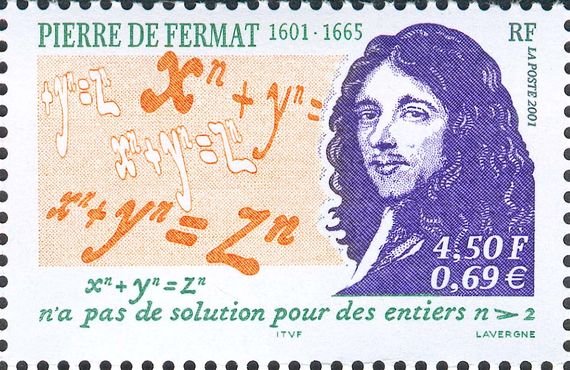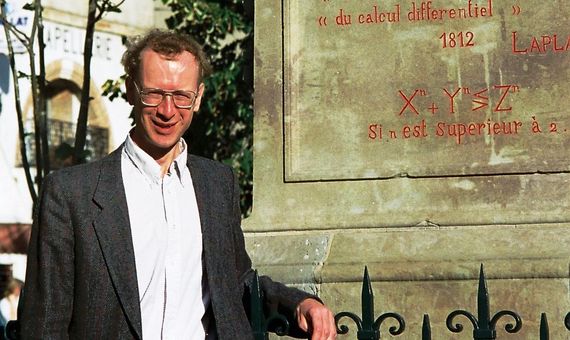There was a time when mathematics flourished thanks to some passionate relationships by letter. It was in France, at the beginning of the 17th century, when the habit of challenging oneself to solve problems and numerical puzzles spread among the intellectual elite. And from those letters and challenges were born new disciplines of that science, like the theory of probabilities or infinitesimal calculus. At the heart of that intense postal exchange was Pierre de Fermat, an enthusiast who became one of the most greatest mathematicians of all time, known both for his discoveries and for a final problem that he left unsolved and that for three centuries confounded everyone who tried to solve it—until a boy read the history of Fermat’s Last Theorem and dreamed of finding the solution.
The son of a wealthy leather merchant, Pierre de Fermat (between 31 October and 6 December 1607 – 12 January 1665) studied civil law at the University of Orleans and progressed in his judicial career path until reaching a comfortable position in the Parliament of Toulouse, which allowed him to spend his spare time on his great love: mathematics. In the afternoons, Fermat would put the law to one side and dedicate himself to deepening his mathematical investigations. He studied the treatises of the scholars of classical Greece and combined those old ideas with the new methods of algebra by François Viète (1540-1603). In this way, Fermat found mathematical problems with which he challenged by letter other intellectuals such as Descartes and Pascal.

The result of his quarrels through the post with the philosopher René Descartes inspired Newton and Leibniz to develop infinitesimal calculus. Later, in 1654, a writer and professional gambler asked the mathematician Blaise Pascal for help in fairly distributing the money wagered on an interrupted game of dice, based on the scores obtained until then. Pascal challenged Fermat to solve the problem and together they succeeded, thereby laying the foundation of probability theory.
Pure mathematics, a game of wits
But the greatest contributions of Pierre de Fermat to mathematics were in another branch—number theory—which studies whole numbers, the relations between them and the patterns that follow. This is pure mathematics—a game of wits: for example, Fermat showed that 26 is the only number “trapped” between a square (52 = 25) and a cube (33 = 27). He used mathematical logic to prove that no other number between zero and infinity meets that condition (x2 + 1 = z = y3 – 1), and he challenged his friends and rivals to prove it too.
However, this French mathematical genius had the habit of not revealing his calculations or the proofs of his theorems, which frustrated his adversaries: Descartes came to call him a “braggart”, and the Englishman John Wallis referred to him as “that damn Frenchman”. An example of Fermat’s provocative style is the famous annotation that Fermat wrote in 1637 in the margin of his copy of Diophantus’ Arithmetica: “I have discovered a truly marvellous proof of this proposition which this margin is too narrow to contain.” That sentence accompanied another handwritten statement by Fermat: “It is impossible to separate a cube into two cubes, or a fourth power into two fourth powers, or in general, any power higher than the second, into two like powers.”

Translated into mathematical formulas, that means that it is impossible to find a solution to any equation of the type xn + yn = zn (if we only use positive integers and n is also greater than 2). Fermat never sent this challenge by letter and after his death his son Clément-Samuel found it and published it. Thus was born the legend of the greatest problem in the history of mathematics.
The Last Theorem
Although Fermat never revealed the proofs of his theorems, other mathematicians proved each and every one of them during the eighteenth century—all except for that marginal note, which became known as Fermat’s Last Theorem. By the end of the nineteenth century, no one had yet managed to find a solution to that equation—and prove Fermat wrong—or to prove that his theorem was correct. Some great mathematicians like Sophie Germain succeeded in finding partial proofs (for concrete values of n), but none managed to come up with a general proof.

The new mathematical theories did not give clues about how to approach the problem. And during the twentieth century the development of computers was making it increasingly clear that Fermat was right, because in practice computer calculations were unable to find numbers that fit into the equation, and also for increasingly large values of n. But a definitive proof was necessary. In 1963, a 10-year-old boy named Andrew Wiles read that story, was fascinated, and set out to dedicate his life to proving Fermat’s Last Theorem. Two decades later, Wiles became a renowned mathematician before deciding to return to his childhood dream. He began to secretly investigate finding the solution to the problem, a task to which he would end up devoting seven years of his life.
Andrew Wiles completed his proof of Fermat’s Last Theorem on September 19, 1994, after correcting an error that kept the scientific community in suspense for a year. He achieved this feat by using innovative mathematical techniques that did not exist in the seventeenth century, which raises some more questions: Did Fermat really have a proof of his theorem, or was it just a bluff? Is it possible to prove it without today’s sophisticated mathematics?
Comments on this publication